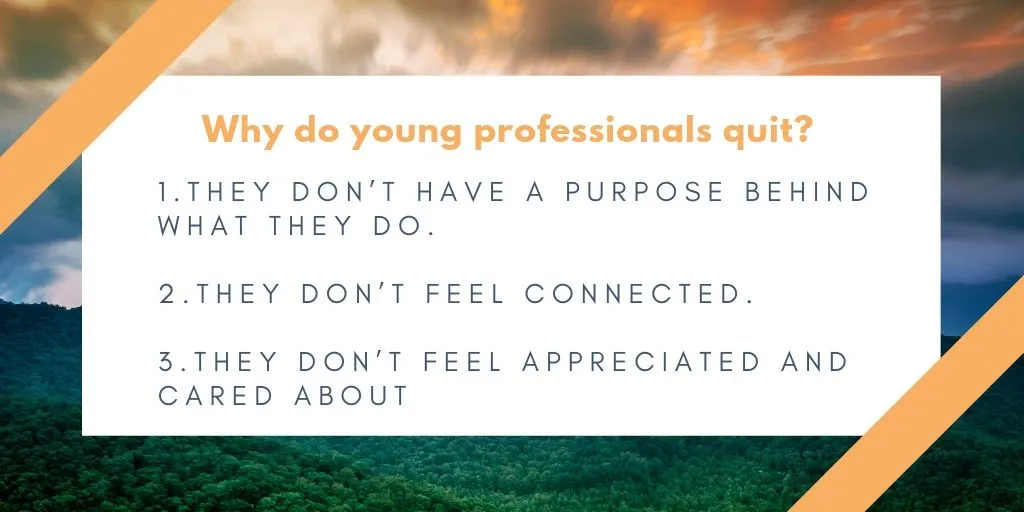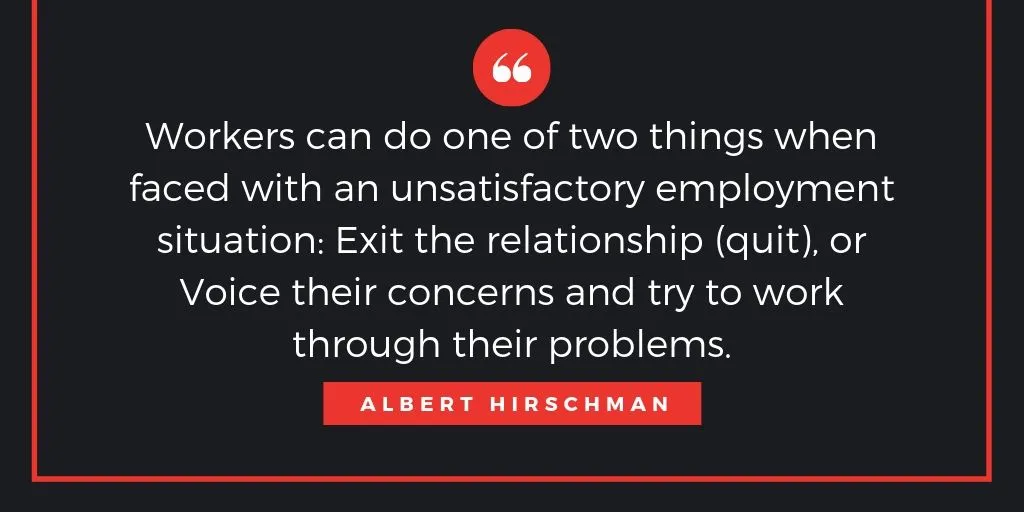Innovative Employee Retention Strategies
Are my employees happy? Are they actively looking for a new job? What can I do to keep them around? These are all questions I would regularly ask myself as a manager.
Hiring great candidates is integral to an organization's success, but overall employee retention should also be a priority. Here are some practical and innovative employee retention strategies your business might want to look into.
Table of Contents:
-
Innovative Employee Retention Strategies
-
Employee Training and Development Plan
-
Frequently Asked Questions (FAQ)
-
What Are The Benefits Of Employee Development?
-
Employee Retention Quotes
-
It’s every manager’s worst nightmare. Your best employee asks to “talk,” followed by a conversation about leaving for another company. Now what do you do? Not only did your best employee leave, but you will likely take an expensive hit trying to replace them.
Finding new talent in today’s economy is not easy when you know that skilled employees are in high demand. This is one of the many reasons why keeping ALL employees satisfied should be at the top of any employer’s list.
How to Retain and Develop Employees
Companies and organizations invest significant time, effort, and money in hiring the best employees. And while hiring top talent is ideal, some say it’s even better when such organizations invest in developing and retaining their current employees.
With such a significant investment going into these kinds of employees (insurance, benefits, etc.), losing them to another offer hurts the organization, and you’ll have to start looking for great talent all over again. So, how do you fix it?

Employee retention statistics
Start By Building Innovative Employee Retention Strategies
To retain your employees, you need a good employee retention strategy. These are the various rewards and benefits you can offer to keep your employees interested in working for you for a long time. A good employee retention strategy should feature a mix/match of the following**:**
1. Training
Building on their skills and talent through training will benefit the employee and your company. Your employees will become more motivated to work, and their productivity will increase in return.
Ensure you are preparing employees for the future of work by training them on up-and-coming technologies.
“Automation will eliminate an estimated 73 million jobs by 2030” - McKinsey Global Institute. While this stat might look terrifying for future work, history has also taught us that new technologies and advances bring new jobs. New positions you can train employees for!
2. Salary And Benefits
The most important factor people consider before accepting a job/position is the salary and benefits of the role. Employees want to feel that they are receiving value equivalent to what they are offering to your company.
As an employer, your employees’ salaries should reflect how much value they add to your company. You don’t need to pay them an overwhelming amount of money, but a payment worth the compensation of their time and energy should do the trick.
You can even take it a notch higher by giving them salary enticements, such as a raise if they hit a specific target or after a certain period.
While deciding what salary they should be paid, clarify what is expected of them so their salary reflects how well they have aligned themselves with the company's goals.
Benefits also play a significant role in employee retention. These benefits can include health insurance, life insurance, paid holidays, maternal or paternal leave, a company car, or anything else that would be relevant to the employee. The benefits must be exceptional if you want to be competitive and retain your employees.
3. Employee Engagement
Every employee wants to work where they feel valued and that their feedback is essential. They want to be in a place where they feel their contribution to the business is critical, where they have the freedom to express their opinions without fear of intimidation, and where the work environment is open and honest.
As an employer, you must meet and discuss their concerns and contributions, not just through chance encounters in the hall but during face-to-face (or virtual) discussions.
Engage and encourage them to come up with innovative ideas and solutions. Listen to their suggestions and always be available when your employee asks for guidance.
"A Business Review study found that an outlet to voice workers’ frustrations improved retention within an organization (voluntary leave was 20% lower within this group)."
— Harvard Business Review
4. Great Culture
Your employees need to be in an environment where they can grow, learn, and advance their careers within the company. This is the kind of culture you need to create in your company.
This is best achieved by assisting those looking to advance their education, giving employees challenging and stimulating work, and tapping into their passion, allowing them to focus their time and energy on projects they enjoy.
In addition, you need to create a culture where you positively reward your employees when they meet their goals. One way of rewarding them is through monetary bonuses, but public recognition also gets the job done. Recognition builds employee loyalty and creates goodwill.
Employee retention requires you to make your talent feel appreciated, respected, and worthwhile. When your employees feel undervalued or unappreciated, they will look for employment elsewhere.
It is also essential to remember that the praise must be sincere. Your employees are competent and can tell the difference. It would be best if you created an environment that makes your employees feel like an asset. This can be as simple as saying hi when you see them and calling them by name.
This might seem trivial, but it shows your employee that you have taken the time to know their name and value them as a part of your company.
Note: Retention and commitment require both sides to make an effort. If an employee isn’t willing to meet you halfway, it might be time to move on from them.

Employee Retention Quote
Next, Build Out an Employee Development Plan
The need to train and develop your employees may come up due to several reasons, such as performance appraisal that shows a need for improvement, a succession plan to help replace a removed or promoted individual, piloting a new management team or system, technological changes in the business to keep up with, or simply wanting to see your employees succeed.
There are countless avenues to consider when creating an employee development plan that will work for your company. Some steps to build out your plan include:
-
First and foremost, look to align the development needs of your employees with your company’s business needs. Identify the necessary skills, knowledge, and competencies to support these business goals, and then talk to your employees to better understand their career goals (consider your short and long-term business objectives).
- Note: Recognizing the difference between an employee's goals and your development plan is essential. Not every employee wants the same thing. If they enjoy their current position or have another type of training program in mind, forcing them into an unwanted development plan won’t work.
-
Run through the various pieces of training you have available and move forward with the best match. There are endless training and development options, such as one-on-one coaching, group sessions, online classes, and conferences.
-
Set a goal or end date for when the training/development should be complete.
-
Check-in before, during, and after the process to see where they sit regarding their developmental goals. This will help you evaluate their progress and the overall impact of the development plan.
-
Apply the employee's new skills to the workplace.
Related Articles
Wrapping Up | Innovative Employee Retention Strategies
Effective employee retention strategies vary depending on a variety of factors, including industry, culture, demographics, and organization size, to name a few.
Although retention/development strategies have nuances, specific themes seem to appear within them. We noticed they all have some form of:
-
Personal/professional development
-
Great culture
-
A sense of purpose
-
Proper compensation
-
Engaging management
If you do your part by giving employees a good reason to stay around, that’s exactly what they will do. Good luck with your retention and development plan!
Title: Innovative Employee Retention Strategies for 2023
Category: Employer Resources
Tags: _how to retain employees, retaining employees, employee retention statistics, employee retention quotes, employee training and development, employee retention strategies, employee retention rat_e
Author: Reid is a contributor for_ theJub. He’s an employment and marketing enthusiast who studied business before taking on various recruiting, management, and marketing roles. More from the author. | Author Profile_





